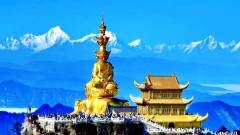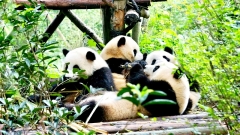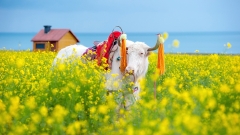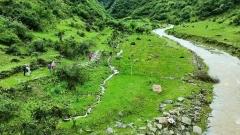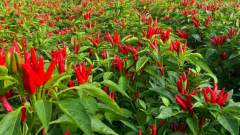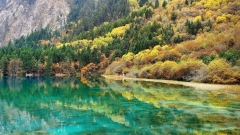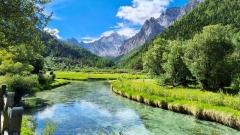Rising high above the Tibetan Plateau and Sichuan Basin, Mount Gongga—also known as Minya Konka—stands as the tallest peak in Sichuan Province and one of the most iconic mountains in China. At 7,556 meters (24,790 feet), it is often called the “King of Sichuan Mountains”, revered not only for its staggering height but also for its spiritual and cultural significance. Travelers drawn to Tibet and western Sichuan often dream of seeing this sacred giant, whether by trekking around its base or viewing its snow-clad summit from nearby passes.
Geography and Location
Mount Gongga lies in the Daxue Mountain Range, part of the eastern edge of the Tibetan Plateau. It towers above the surrounding valleys, glaciers, and grasslands, creating dramatic elevation contrasts. The mountain is surrounded by rugged terrain and deep gorges, making access both challenging and rewarding.
-
Elevation: 7,556 m (24,790 ft)
-
Range: Daxue Mountains, Hengduan region
-
Nearest Towns: Kangding, Luding, and Hailuogou
This strategic location places Gongga at the crossroads of Tibetan, Han, and Yi cultural regions, adding richness to its historical importance.
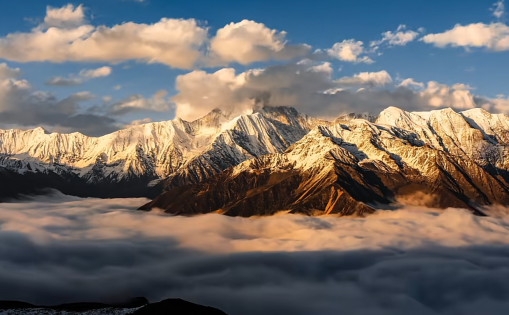
Sacred Significance
For Tibetans and local ethnic groups, Minya Konka is more than a mountain—it is a sacred site. Pilgrims believe that circling the mountain (a form of kora) brings immense spiritual merit, similar to pilgrimages around Mount Kailash in western Tibet. Tibetan Buddhist monasteries dot the valleys around Gongga, and legends describe the peak as the dwelling place of protective deities.
Natural Beauty and Landscapes
Mount Gongga is renowned for its stunning scenery:
-
Glaciers: Over 70 glaciers spill down its slopes, including the Hailuogou Glacier, one of the most accessible in China.
-
Alpine Meadows: Wildflowers bloom across vast grasslands in summer, while yaks graze against snow-capped backdrops.
-
Rivers and Valleys: The Dadu and Yalong rivers carve dramatic gorges nearby.
-
Panoramic Views: Sunrises and sunsets at Gongga reveal fiery hues painting its icy ridges, offering photographers a dreamlike spectacle.
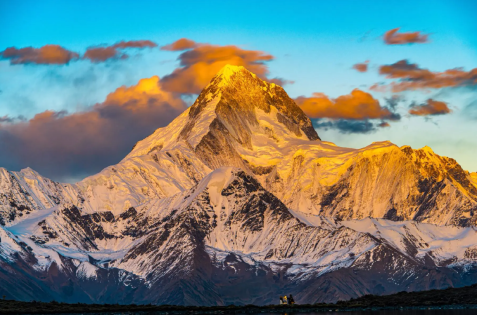
Adventure Tourism: Trekking and Mountaineering
Trekking
Gongga offers some of the best trekking routes in Sichuan, suitable for different levels of hikers:
-
Kangding to Gongga Monastery Trek – A moderate trek passing through alpine pastures and traditional Tibetan villages.
-
Minya Konka Base Camp Trek – A challenging route leading close to the glaciers at the base of the peak.
-
Hailuogou Scenic Area – Ideal for less experienced hikers, with boardwalks and viewpoints overlooking glaciers.
Mountaineering
For elite climbers, Mount Gongga is one of China’s toughest peaks. Due to unpredictable weather, technical routes, and avalanches, it has a reputation as one of the most dangerous 7,000-meter peaks in the world. Only a handful of successful ascents have been recorded.
>>Click For Mount Gongga Trekking Tour
Hailuogou Glacier Park
One of the most famous spots near Gongga is Hailuogou Glacier National Park, located in Luding County. It is known for:
-
Modern Glacier Access: Boardwalks and cable cars lead tourists directly to glacier viewpoints.
-
Hot Springs: Natural geothermal pools surrounded by snowy scenery.
-
Ice Waterfalls: Winter visitors can witness towering frozen waterfalls up to 1,000 meters high.
This makes Hailuogou one of the most convenient locations to experience glacial landscapes in China.
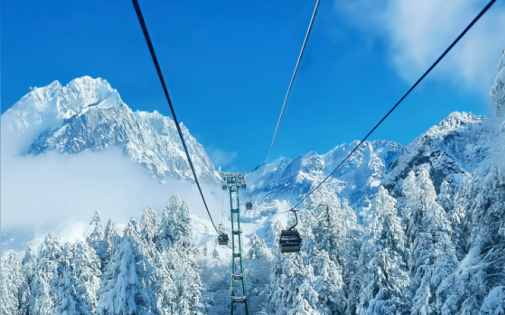
Cultural Encounters
The valleys around Gongga are home to diverse ethnic groups, including Tibetan, Yi, and Han communities. Travelers can experience:
-
Tibetan monasteries such as Tagong Monastery in nearby Tagong Grassland.
-
Traditional villages where locals live in stone houses adorned with prayer flags.
-
Festivals featuring yak dances, Buddhist ceremonies, and folk music.
These encounters add a human dimension to the mountain’s grandeur.
Best Viewing Spots
Even if you are not trekking to the mountain’s base, several accessible locations offer breathtaking views:
-
Zimei Pass (4,500 m): Famous for panoramic sunrise and sunset views.
-
Hailuogou Glacier Park: Offers glacier and mountain views.
-
Tagong Grassland: Known as the “Little Tibet of Sichuan,” with Gongga visible in the distance.
-
Mugecuo Lake near Kangding: Another serene location to see reflections of the mountain.
When to Visit
The best time to visit Gongga depends on your purpose:
-
April to June: Spring wildflowers and moderate weather.
-
July to September: Lush greenery, though with more rainfall.
-
October: Clear skies, autumn colors, and excellent photography conditions.
-
Winter (November–February): Cold but crystal-clear views, especially in Hailuogou.
Practical Travel Tips
-
Access: Most travelers reach Kangding by road or flight from Chengdu, then continue by bus or hired vehicle.
-
Altitude: Base areas range from 2,500 m to over 4,000 m. Proper acclimatization is essential.
-
Permits: Foreign travelers generally do not need special permits unless venturing into restricted zones.
-
Packing: Warm clothing, sturdy boots, sun protection, and trekking gear are recommended.
Why Mount Gongga is Worth Visiting
Mount Gongga is more than just a peak—it is a place where nature, culture, and spirituality converge. Its glaciers, grasslands, and monasteries embody the spirit of Sichuan’s highlands. Whether you are a serious trekker, a photographer, or a cultural traveler, Gongga offers experiences ranging from thrilling adventure to peaceful reflection.
Conclusion
As the “King of Sichuan Mountains,” Mount Gongga holds a special place in the hearts of locals and explorers alike. Its snow-covered crown, sacred aura, and dramatic landscapes make it a destination unlike any other in China. Visiting Gongga means witnessing both the raw power of nature and the enduring traditions of Tibetan culture. For those seeking an authentic journey into Sichuan’s wild beauty, Minya Konka is a mountain that truly deserves its royal title.



